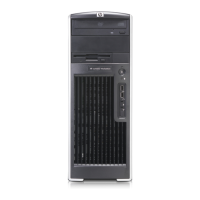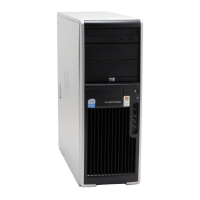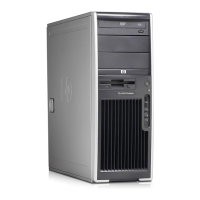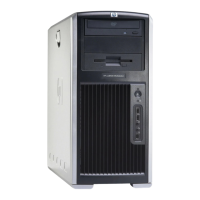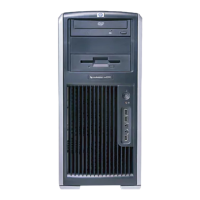100 REMOVAL AND REPLACEMENT PROCEDURES
Hard Drive
For more information on SATA hard drives and the SATA RAID configuration, see Appendix B, “SATA
Devices,” on page 155.
Removing a Hard Drive
1 Disconnect power from the system (page 68) and remove the access panel (page 74).
2 Disconnect the cables from the back of the hard drive.
3 Push in on the green drivelock release tabs and slide the hard drive out of the chassis.
Installing a Hard Drive
This section describes how to install SCSI and SATA hard drives.
“Installing a SCSI hard drive” section on page 100
“intalling a SATA hard drive” section on page 103
INSTALLING A SCSI HARD DRIVE
For more information on SCSI hard drives, see Appendix B, “SCSI Devices,” on page 151.
Before installing a SCSI hard drive on your system, you must give the hard drive a unique SCSI ID.
All SCSI controllers require a unique SCSI ID (0–15) for each SCSI device that is installed. The reserved
and available SCSI ID numbers are displayed in the following list:
0 is reserved for the primary hard drive (not reserved for the primary hard drive on Linux).
7 is reserved for the SCSI controller.
1 through 6 and 8 through 15 are available for all other SCSI devices.
When 0 is used for the primary hard drive, set the second hard drive to 1, the third to 2, and so on.
To set the SCSI ID on a drive, see the instructions on top/back of the hard drive for the correct jumper
settings. The drive probably displays a diagram of the jumper block. This diagram shows you which
blocks to cover with your jumper to get the desired ID.

